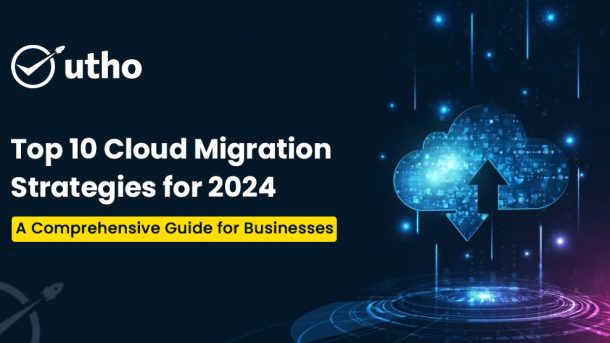In today’s digital landscape, cloud migration is not just a trend—it's a strategic necessity. A recent Gartner study found 60% of businesses struggle with cloud migration. The main challenges are unplanned costs, misaligned strategies, and operational disruptions. Many companies rush into cloud migration without a plan. This leads to waste, security gaps, and rising costs.
Cloud migration, if done haphazardly, can derail business operations instead of improving them. With cloud use set to rise over 20% by 2025, businesses must have a solid plan. It should cut risks while boosting cost efficiency and performance.
This guide will explore the top 10 cloud migration strategies for 2025. It will provide tips to avoid common pitfalls. These strategies will help, whether you're new to the cloud or optimizing a migration. They will ensure a smooth, cost-effective, and secure move to the cloud.
1. Assess Your Current Infrastructure
The first step in any cloud migration strategy is assessing your existing infrastructure. Knowing your current environment is key. This includes your hardware, software, and data needs. It helps you make informed decisions on how to best migrate to the cloud. This phase involves: mapping dependencies, finding workloads to move, and optimizing before migration.
For example, legacy systems often need reconfiguring or replacement before migration. Businesses should weigh the costs and benefits of moving these systems versus rebuilding them in the cloud.
Key Tip: Use tools like AWS Migration Hub or Azure Migrate. They can analyze and visualize your current infrastructure. This will make your assessment more accurate and efficient.
2. Define Clear Goals and Objectives
Moving to the cloud without clear goals can lead to unexpected costs and inefficiencies. Defining your objectives early on is crucial for a successful migration. Are you aiming for cost savings, increased performance, better security, or enhanced agility? Defining your goals helps shape your cloud migration strategy to meet specific business needs.
Goals include: reducing costs, increasing scalability, improving disaster recovery, and enabling faster launches.
Key Tip: Align your cloud migration strategies with key business objectives. Engage stakeholders from IT, finance, and operations. Ensure they all support the migration plan.
3. Partner with Experts for Risk-Free, Cost-Effective Migration
Migrating to the cloud involves several risks, from data loss to downtime. For this reason, partnering with cloud experts like Utho can make a significant difference. Utho’s team specializes in ensuring risk-free migration while focusing on cloud cost reduction.
Their deep expertise helps businesses move with confidence. They ensure a seamless transition from on-premises environments or other cloud providers.
Utho helps you migrate to the cloud. It reduces data loss, downtime, and costs by optimizing your cloud resources.
Key Tip: Always work with a trusted partner. They should provide full migration support. This is important for cutting costs and managing risk.
4. Choose the Right Cloud Model (Public, Private, or Hybrid)
One of the most important cloud migration strategies is deciding which cloud model suits your business best. There are three main cloud deployment models: public cloud, private cloud, and hybrid cloud.
- Public Cloud: Offers scalable, on-demand resources over the internet. It's cheap and perfect for flexible, scalable workloads, like web apps.
- Private Cloud: This model is for one organization only. It offers better security, control, and customization. It’s a great option for industries with strict compliance requirements.
- Hybrid Cloud: A mix of both public and private clouds, hybrid cloud lets workloads move between the two. It provides the best of both worlds.
Key Tip: Assess your data security needs, budget, and performance requirements to choose the cloud model that fits best.
5. Optimize Workloads for Cloud
Not all workloads are suited for a lift-and-shift strategy where you simply move them to the cloud without modifications. Before migrating, consider optimizing your workloads for cloud environments. This may involve re-architecting apps, upgrading systems, or refactoring code to use cloud services.
For instance, legacy applications often need to be modernized to work efficiently in the cloud. This may involve breaking down monolithic apps into microservices. Or, it may involve using containerization technologies like Docker or Kubernetes.
Key Tip: Use cloud-native features to optimize your workloads. They include serverless computing, microservices, and containers. They can improve performance and save costs.
6. Prioritize Data Security and Compliance
One of the biggest concerns for organizations moving to the cloud is data security and regulatory compliance. Ensuring that your data remains secure throughout the migration process is critical. Key security strategies for cloud migration include encryption, access controls, and regular audits.
Furthermore, depending on your industry, you may need to comply with various regulations, such as GDPR, HIPAA, or SOC 2. It's crucial to ensure your cloud provider's compliance tools align with your industry's regulations.
Key Tip: Use tools like AWS Cloud Trail or Azure Security Center to monitor and manage security risks throughout your migration process.
7. Automate Where Possible
Automation is key to a smooth and efficient cloud migration. Automating repetitive tasks not only saves time but also reduces the risk of human error. There are various automation tools available, such as Infrastructure as Code (IaC) platforms like Terraform, which help in automating infrastructure provisioning, configuration, and management.
Automation is particularly useful during the testing and validation phase of your migration. You can automate load testing, configuration checks, and application performance testing to ensure everything works as expected after migration.
Key Tip: Implement automation at every possible stage of the migration process, from provisioning to deployment, to streamline the entire journey.
8. Implement a Phased Migration Approach
Migrating your entire infrastructure in one go can be risky and overwhelming. Instead, use a phased migration approach where you move applications and workloads to the cloud gradually. Start with non-critical applications or workloads and gradually progress to more complex systems.
A phased approach allows you to learn from each phase and make necessary adjustments before moving forward. It also reduces downtime, ensuring your business runs during the migration.
Key Tip: Prioritize applications with low complexity and high business impact for early migration phases to gain immediate benefits.
9. Monitor and Optimize Post-Migration
The work doesn’t stop once you’ve migrated to the cloud. Monitoring and optimization are crucial parts of maintaining cloud performance and controlling costs. Use cloud tools like AWS CloudWatch, Azure Monitor, or Google Cloud Operations Suite to monitor your cloud environment.
After migrating, some services may be underused or misconfigured. This can lead to extra costs. Regularly reviewing and optimizing your cloud usage keeps costs down and performance high.
Key Tip: Use automated cloud cost tools like Utho's to monitor usage and cut waste. They won't hurt performance.
10. Prepare for Future Scalability
Finally, cloud migration strategies should not only focus on the present but also on future needs. One of the primary advantages of the cloud is scalability, so ensure that your cloud environment can handle future growth. Design your cloud architecture to support scaling. This means both: 1. Vertically, by increasing resources within the same instance. 2. Horizontally, by adding more instances.
Consider using auto-scaling tools to adjust your cloud infrastructure based on real-time demand. This ensures that you’re only paying for what you use and not over-committing resources.
Key Tip: Plan for scalability from the start. Use cloud-native services that automatically scale with workload demands.
Conclusion
In 2024, cloud migration strategies stress a well-planned, phased, and optimized approach. This ensures businesses transition smoothly and gain full value from their cloud investments. With the right strategy, businesses can unlock the cloud's true potential. They can achieve greater agility, scalability, and cost efficiency.
A successful migration requires:
- Assessing your current infrastructure.
- Defining clear goals.
- Partnering with experts like Utho for a risk-free migration.
- Using the right cloud model for your business needs.
Also, optimize workloads, automate processes, secure your data, and monitor performance after migration. This will make your cloud journey a lasting success, not just a one-time transition.
These cloud migration strategies will help you. They will reduce costs, enhance security, and prepare for growth. Use them as a roadmap to meet your goals.




